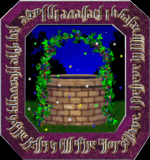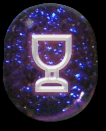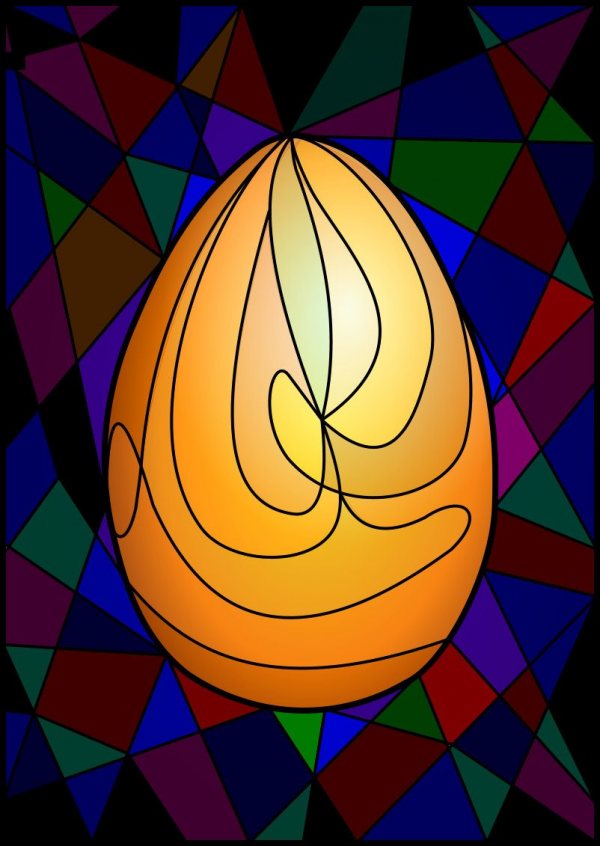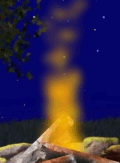Thistle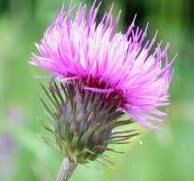
As a class Thistles have been held sacred to Thor, because, say the old authors, receiving their bright colours from the lightning, and because protecting those who cultivate them from its destructive effects.
Added Jan 9, 2011
| 13,665 Reads
Thistles are comprised in a large mixed genus of our English weeds, and wild plants, several of them possessing attributed medicinal virtues. Some of these are Thistles proper, as the Carduus, the Cnicus, and the Carlina: others are Teasels, Eryngiums, and Globe Thistles, etc. Consideration should be given here to the Carduus marianus, or Lady's Thistle, the common Carline Thistle, the Carduus benedictus (Blessed Thistle), the wild Teasel (Dipsacus), and the Fuller's Teasel, as Herbal Simples; whilst others of minor curative usefulness are to be incidentally mentioned. As a class Thistles have been held sacred to Thor, because, say the old authors, receiving their bright colours from the lightning, and because protecting those who cultivate them from its destructive effects. In Devon and Cornwall Thistles are commonly known as Dazzels, or Dashel flowers. As a rule they flourish best in hot dry climates. The Carduus marianus (Lady's Thistle), Milk Thistle, or Holy Thistle, grows abundantly in waste places, and near gardens throughout the British Isles, but it is not a native plant. The term Carduus, or Cardinal, refers to its spring leaves, and the adjectives "Marianus," "Milk," and "Holy," have been assigned through a tradition that some drops of the Virgin Mary's milk fell on the herb, and became exhibited in the white veins of its leaves. By some persons this Thistle is taken as the emblem of Scotland. Dioscorides told of the Milk Thistle, "the seeds being drunk are a remedy for infants that have their sinews drawn together." He further said: "The root if borne about one doth expel melancholy, and remove all diseases connected therewith." Modern writers do laugh at this: "Let them laugh that win! My opinion is that this is the best remedy that grows against all melancholy diseases." The fruit of the Carduus marianus contains an oily bitter seed: the tender leaves in spring may be eaten as a salad; and the young peeled stalks, after being soaked, are excellent boiled, or baked in pies. The heads of this Thistle before the flowers open may be cooked like artichokes. The seeds were formerly thought to cure hydrophobia. They act as a demulcent in catarrh and pleurisy, being also a favourite food of Goldfinches. A decoction of the seeds when applied externally is said to have proved beneficial in cases of cancer. Thistle down was at one time gathered by poor persons and sold for stuffing pillows. It is very prolific in germination, and an old saying runs on this score:-- "Cut your Thistles before St. John, Or you'll have two instead of one." This Milk Thistle (Carduus marianus) is said to be the empirical nostrum, anti-glaireux, of Count Mattaei. "Disarmed of its prickles," writes John Evelyn, "and boiled, it is worth esteem, and thought to be a great breeder of milk, and proper diet for women who are nurses." In Germany it is very popular for curing jaundice and kindred biliary derangements. When taken by healthy provers in varying quantities to test its toxic effects the plant has caused distension of the whole abdomen, especially on the right side, with tenderness on pressure over the liver, and with a deficiency of bile in hard knotty stools, the colouring matter of the faeces being found by chemical tests present in the urine: so that a preparation of this Thistle modified in strength, and considerably diluted in its doses proves truly homoeopathic to simple obstructive jaundice through inaction of the liver, and readily cures the disorder. A tincture is prepared (H.) for medicinal use from equal parts of the root, and the seeds (with the hull on) together with spirit of wine. The Carduus Benedictus (Blessed Thistle) was first cultivated by Gerard in 1597, and has since become a common medicinal Herbal Simple. It was at one time considered to be almost a panacea, and capable of curing even the plague by its antiseptic virtues. This Thistle was a herb of Mars, and, as Gerard says: "It helpeth giddiness of the head: also it is an excellent remedy against the yellow jaundice. It strengthens the memory, cures deafness, and helps the bitings of mad dogs and venomous beasts." It contains a bitter principle "cnicin," resembling the similar tonic constituent of the Dandelion, this being likewise useful for stimulating a sluggish liver to more healthy action. The infusion should be made with cold water: when kept it forms a salt on its surface like nitre. The herb does not yield its virtues to spirit of wine as a tincture. Its taste is intensely bitter. The Carline Thistle (Carlina vulgaris) was formerly used in magical incantations. It possesses medicinal qualities very like those of Elecampane, being diaphoretic, and in larger doses purgative. The herb contains some resin, and a volatile essential oil of a camphoraceous nature, like that of Elecampane, and useful for similar purposes, as cordial and antiseptic. This Thistle grows on dry heaths especially near the sea, and is easily distinguished from other Thistles by the straw-coloured glossy radiate long inner scales of its outer floral cup. They rise up over the florets in wet weather. The whole plant is very durable, like that of the "everlasting flowers:" Cudweed (Antennaria). The name Carlina was given because the Thistle was used by Charles the Great as a remedy against the plague. It was revealed to him when praying for some means to stay this pestilence which was destroying his army. In his sleep there appeared to him an angel who shot an arrow from a cross bow, telling him to mark the plant upon which it fell: for that with such plant he might cure his soldiers of the dire epidemic: which event really happened, the herb thus indicated being the said thistle. In Anglo-Saxon it was the ever-throat, or boar-throat. On the Continent a large white blossom of this species is nailed upon cottage doors by way of a barometer to indicate the weather if remaining open or closing. The wild Teasel (Dipsacus sylvestris) grows commonly in waste places, having tall stems or stalks, at the bottom of which are leaves (like bracts) united at their sides so as to form a cup, open upwards, around the base of the stalk, and hence the term "Dipsacus," thirsty. This cup serves to retain rain water, which is thought to acquire curative properties, being used, for one purpose, to remove warts. The cup is called Venus' basin, and its contents, says Ray, are of service ad verrucas abigendas; also it is named Barber's Brush, and Church Broom. The Fuller's Teasel, or Thistle (Dipsacus fullonum) is so termed from its use in combing and dressing cloth,--teasan, to tease,-- three Teaselheads being the arms of the Cloth Weavers' Company. This is found in the neighbourhood of the cloth districts, but is not considered to be a British plant. It is probably a cultivated variety of the wild Teasel, but differs by having the bristles of its receptacles hooked. The Sow Thistle (Sonchus oleraceus), named sonchus because of its soft spikes instead of prickles, grows commonly as a weed in gardens, and having milky stalks which are reputed good for wheezy and short-winded folk, whilst the milk may be used as a wash for the face. It is named also "turn sole" because always facing the sun, and Hare's Thistle (the hare's panacea, says an old writer, is the Sow Thistle), or Hare's Lettuce because "when fainting with the heat she recruits her strength with the herb; or if a hare eat of this herb in the summer when he is mad he shall become whole." Another similar title of the herb is Hare's palace, since the creature was thought to get shelter and courage from it. Some suppose that the botanical term Sonchus signifies apo ton soon ekein, from its yielding a salubrious juice. The Sow thistle has been named also Milkweed. According to tradition it sometimes conceals marvels, or treasures; and in Italian stories the words, "Open Sow Thistle" are used as of like significance with the magical invocation "Open sesame." Another name is "Du Tistel" or Sprout Thistle; because the plant may be used for its edible sprouts, which Evelyn says, were eaten by Galen as a lettuce. And Matthiolus told of the Tuscans in his day "Soncho nostri utuntur hyeme in acetariis." The Melancholy Thistle (Carduus heterophyllus) has been held curative of melancholy. It grows most frequently in Scotland and the North of England, and is a non-prickly plant.
Added Jan 9, 2011
| 13,665 Reads
Share The Magic ...
The GoE MONEY!!! Course - A Course In Real MONEY MAGIC!
|

